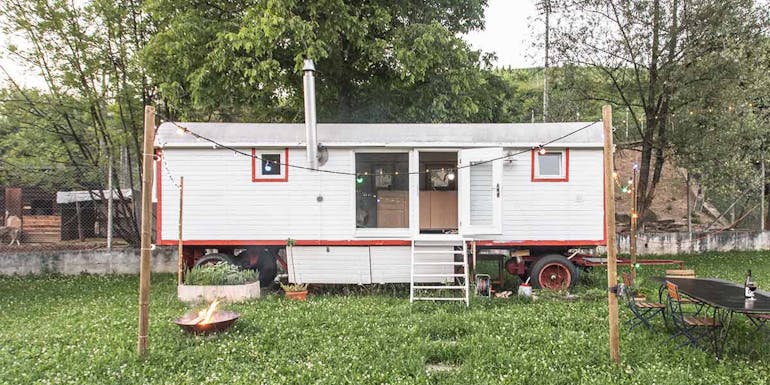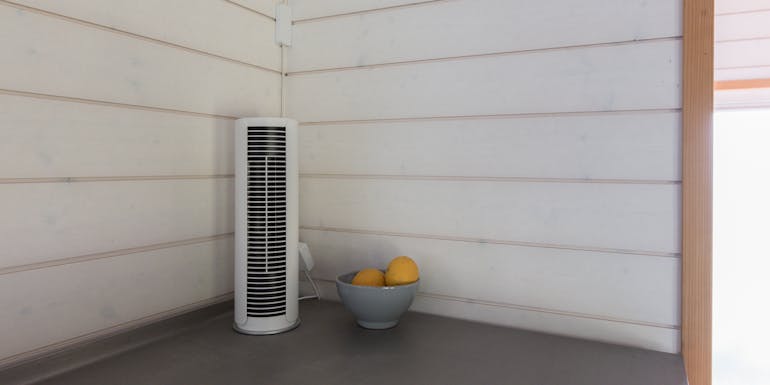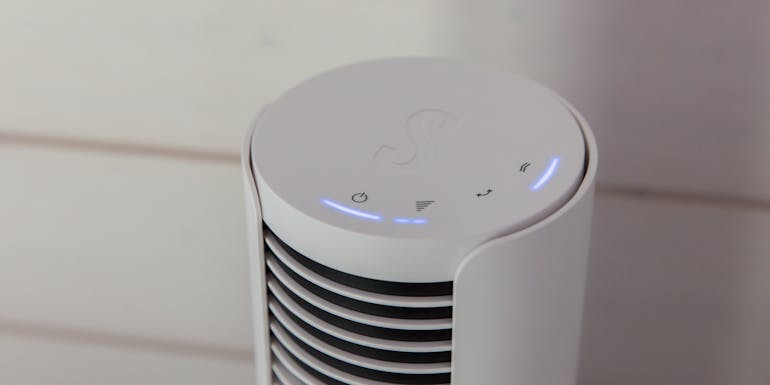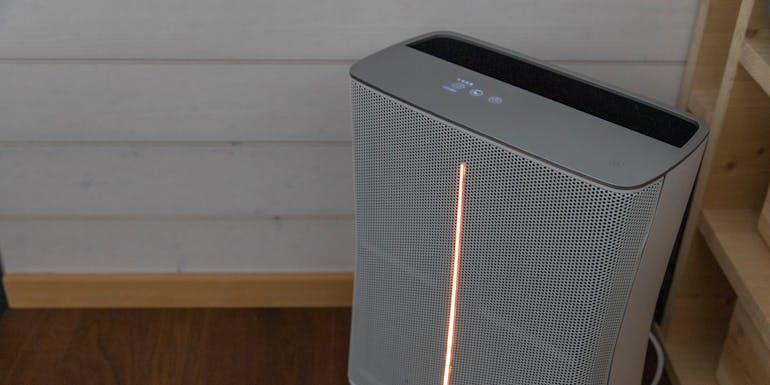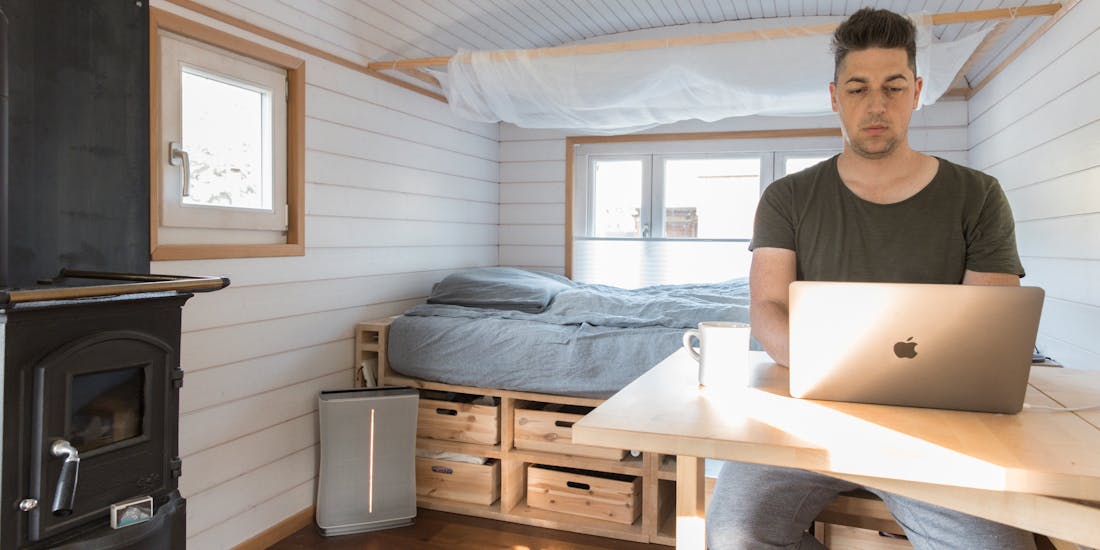
Guest author, 20 August 2020
Neutralise odours
Indoor climate in a tiny house
In these times of increasing rents, living in a tiny house has become an interesting alternative way to live. Particularly, if you want to live by the maxim «reduce to the max». Kevin Rechsteiner is someone who dared to do just that, by swapping his spacious apartment for a home measuring just a few square metres. In 2016, he bought a circus caravan which he converted into his very own tiny house. Kevin Rechsteiner describes the development of the tiny house trend, the challenges imposed by the indoor climate in tiny houses and what he does to combat the heat and unpleasant smells in his tiny house.
The tiny house is currently experiencing a dramatic boom in Europe. The tiny house movement originated in the USA at the end of the 90s. Back then, it was the countermovement to «bigger is better». However, it was at least another ten years before the tiny house movement saw a breakthrough. In Europe, it was a further ten years before people started talking about tiny houses. However, the circus caravan – like the ones that the Romany people live in – has also been a familiar sight in Switzerland since the 60s. Over the past few years, the topic has turned into a trend. Demand for tiny houses is rising. High rents and the desire to downsize and live sustainably make the tiny house an exciting alternative to conventional types of housing. Solutions are increasingly being sought with municipal councils and authorities. More and more sites are becoming available and it is possible to live in a tiny house.
What defines a tiny house?
What makes a tiny house (or other types of small home) different to «regular» buildings? It is usually mobile and has less living space. The Swiss Association for Small Houses has defined the following three criteria
- Residential unit with a maximum total living area of 40 m2
- Stands on wheels or point foundations
- Must meet hygiene conditions
Heat in the tiny house
During the hot spell we had in June 2020, I used my table fan Peter little. It’s a really compact device – measuring less than 40 cm – and can be placed in small rooms either on the floor or on the table. It draws in the ambient air and then expels it at high speed. There are four different settings and a swing mode for improving the distribution of air.
Watch the video from Kevin Rechsteiner testing table fan Peter little (in German).
I left the device on all day during the hot spell and noticed a definite difference in the evening. No heat built up in my tiny house and it was much more pleasant. Even when I am at home in my tiny house, I keep Peter little on. The four settings mean that I can have a strong wind blowing – when you can definitely hear the fan – or a gentle breeze when you can’t hear the fan at all. The benefit of that is that you can leave the fan on all night without being disturbed.
Another exciting feature of Peter little is his power consumption. As most tiny houses have solar panels and battery storage systems, a classic air-conditioning system is usually out of the question as it uses too much power. However on the highest setting, Peter little only requires 10 watts, which means that the device can be left on all day long without any problems.
Bad smells in the tiny house
The kitchen takes up a lot of the space in my tiny house. Because I enjoy cooking and cook a lot, I wanted to have a really big kitchen but there is also room for the boiler and all the domestic technology I need too, for example. Cooking in particular presents a bigger challenge. As I don’t have an extractor installed, the whole of my tiny house can end up being invaded by cooking smells. So the only options I am left with are to open the windows and generally ventilate the place while I’m cooking. That is why I was very excited to see how an air purifier would perform in my tiny house.
I got the chance to test out air purifier Roger little – measuring just 330 x 450 x 170 mm means that he can easily fit into a corner of my tiny house. I mainly used the device in Auto Mode which proved very effective at picking up smells. As soon as it does, you can hear Roger little’s fan going for a few minutes, then the device switches back to the normal mode in which you can no longer hear the fan. I noticed a significant difference here too. Of course, the same cooking smells are still produced (I deliberately closed the windows during the test), but Roger little helps minimise these considerably very quickly.
But Roger little doesn’t just get rid of smells, the device also filters fine dust and pollen. During normal operation, the device only consumes about 10 watts, however under maximum load, consumption can go up to more than 70 watts for a short time.
Roger little is definitely to be recommended for small rooms where smells or air pollution are a problem.
In tiny houses, you always need solutions that are energy-saving and efficient. Especially when it’s wet outside, wet clothes and shoes can increase the humidity in a tiny house which can then promote the growth of mould. Stadler Form also has a solution to this problem too, in the form of a dehumidifier – but I will leave the testing of that device for another day!
If you have questions related to indoor room climate, please get in touch with us. Or subscribe to our newsletter to regularly get informed about current topics regarding indoor climate, experience reports or Stadler Form insights.
